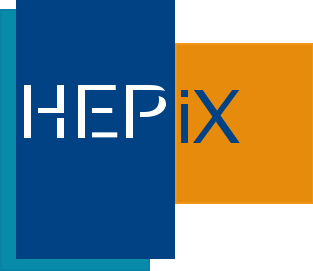Speaker
Description
This contribution describes the CRIC (Computing Resource Information Catalog) framework which is designed to describe the topology of the Experiments computing models, providing unified description of resources and services used by Experiments applications
The Worldwide LHC Computing Grid infrastructure links about 200 participating computing centers affiliated with several partner projects. It is built by integrating heterogeneous computer and storage resources in diverse data centers all over the world and provides CPU and storage capacity to the LHC experiments to perform data processing and physics analysis. In order to be used by the LHC experiments, these distributed resources should be properly described, which implies easy service discovery, detailed description of service configuration, and description of their topology on how the experiments will use these services. Currently this information is not complete, the one available is scattered over multiple generic information sources like GOCDB, OIM, BDII and experiment-specific information systems. Such a model does not allow to validate topology and configuration information easily, and does not allow to understand that big parts of the infrastructure is actually shared between the various experiments, leading to severe operational problem when the resources want to be fully exploited. Moreover, information in various sources is not always consistent. Finally, the evolution of computing technologies introduces new challenges. Experiments are more and more relying on opportunistic resources, which by their nature are more dynamic and not integrated in any WLCG existing framework: also these resources need to be described in CRIC to allow the experiments to effectively exploit them.
CRIC integrates configuration and status information about resources, services and topology of the whole computing infrastructure used by LHC experiments.
CRIC collects information from various information providers, performs validation and provides a consistent set of UIs and APIs to the LHC VOs for service discovery and usage configuration. The main requirements for CRIC are simplicity, agility and robustness. CRIC should be able to be quickly adapted to new types of computing resources, new information sources, and allow for new data structures to be implemented easily following the evolution of the computing models and operations of the experiments.
The implementation of CRIC was inspired by the successful experience with the ATLAS Grid Information System (AGIS). The first prototype was put in place in a short time thanks to the fact that the substantial part of AGIS code was re-used though some re-factoring required in order to perform clean decoupling in two parts:
• A core which describes all physical service endpoints and provides a single entry point for experiments service discovery.
• Optional Experiment-specific extensions, implemented as plugins. They describe how the physical resources are used by the experiments and contain additional attributes and configuration which are required by the experiments for operations and organization of their data and work flows.
CRIC not only provides a current view of the WLCG infrastructure, but also keeps track of performed changes and audit information. Its administration interface allows authorized users to make changes. Authentication and authorization are subject to experiment policies in terms of data access and update privileges.
Scheduling constraints / preferences
I would need to know as soon as possible the date and time of the talk because I won't be able to stay the whole length of HEPIX, thus I need to organize my flights. Thanks in advance
| Length of talk (minutes) | 20 |
|---|
